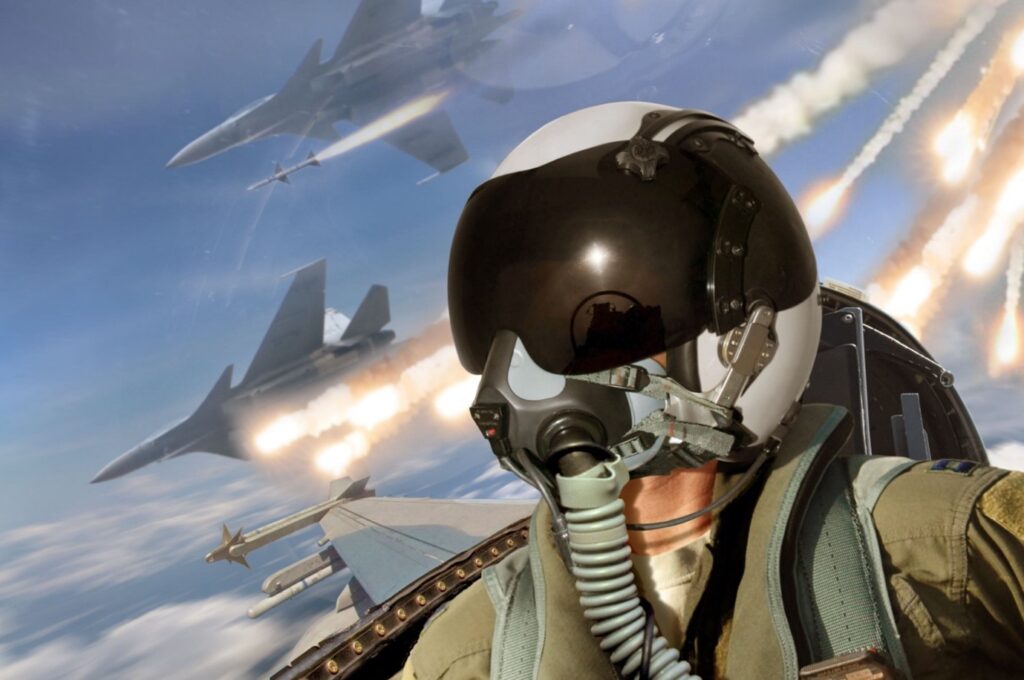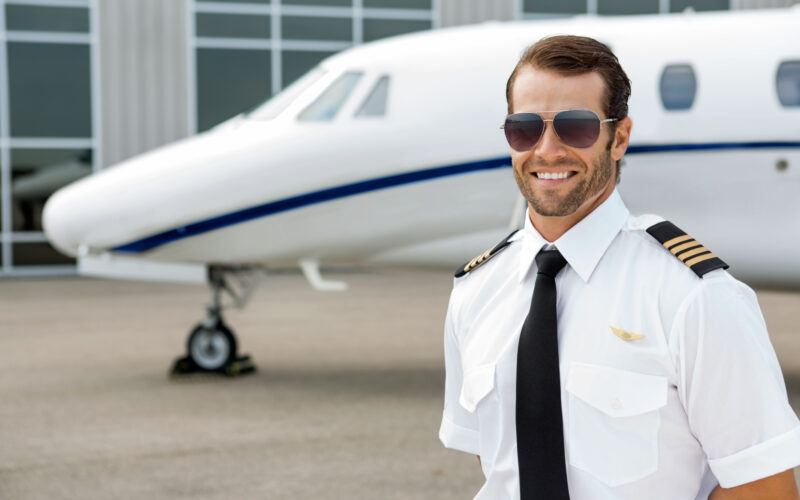As demands for aviation safety continue to grow, the importance of a pilot’s vision cannot be overstated. The ability to see clearly and accurately is paramount for pilots to operate aircraft safely and efficiently. To maintain the highest standards of flight safety, aviation authorities around the world have established specific vision requirements for pilots. In cases where pilots do not meet these requirements without aid, the use of corrective lenses can play a crucial role in enabling them to pursue their passion for flying.
Here, we’ll explore the vision requirements for pilots and unpick the use of corrective lenses in aviation.
Vision requirements for pilots
Visual acuity
Visual acuity, or sharpness of vision, is one of the primary vision requirements for pilots. Different aviation authorities set their own specific standards for uncorrected and corrected visual acuity. Generally, though, a minimum visual acuity is required of 20/40 in each eye (with or without correction). Corrected visual acuity refers to the use of glasses or contact lenses to achieve the required sharpness of vision.
Color vision
Being able to distinguish colors accurately is crucial for pilots, especially during night operations, or when identifying airport lighting and reading instrument displays. Aviation authorities require pilots to pass color vision tests to ensure their ability to perceive color accurately. For those with color vision deficiencies, specialized testing may be conducted to determine their suitability for specific types of flying.
Depth perception
Depth perception is vital for judging distances accurately, particularly during landings and maneuvers. Pilots must be able to demonstrate adequate depth perception during vision testing to ensure that they can safely operate an aircraft in a wide variety of flying conditions.
Peripheral vision
A wide field of vision is essential for pilots, in order to maintain situational awareness and detect potential hazards from all directions. The required minimum peripheral vision may vary based on each specific type of pilot license and the aviation authority’s regulations, however.
The use of corrective lenses for pilots
Eyeglasses
Eyeglasses are a common and effective means of correcting vision for pilots who have myopia (near-sightedness), hyperopia (far-sightedness) or astigmatism. A potential pilot can be considered medically eligible with hyperopia up to +5.0 dioptres, myopia up to -6.0 dioptres, astigmatism up to 2.0 dioptres, and anisometropia up to 2.0 dioptres. That’s the case as long as the best possible corrective measures have been undertaken and there is no significant eye pathology evident. These medical eligibility requirements for potential pilots with specific vision conditions apply to the United States.
Many pilots rely on eyeglasses to meet the required visual acuity standards. It is crucial for pilots to ensure they have a spare pair of glasses available during flights, in order to avoid any disruptions in case of breakage or loss.
Contact lenses
Contact lenses provide an alternative to eyeglasses and are equally acceptable for meeting vision requirements for pilots. They offer the advantage of not obstructing peripheral vision, which can be beneficial during flight operations. However, pilots using contact lenses need to be aware of the potential for dry eyes, especially in the dry cabin environment of an aircraft, and take appropriate measures to ensure eye comfort and safety.
Refractive surgery
Some pilots may choose to undergo refractive surgery, such as LASIK or PRK, to correct their vision permanently. Aviation authorities have established specific guidelines regarding the eligibility of pilots for flight duties after undergoing such procedures. Pilots must adhere to the post-surgery recovery periods and pass additional vision tests before they resume flying duties.
FAA requirements
Vision requirements as set by the Federal Aviation Administration (FAA) encompass aspects such as visual acuity, color vision, depth perception and peripheral vision. Pilots must meet these standards to obtain and maintain their medical certificates, which are a prerequisite for acting as a pilot-in-command or a required flight crew member.
The FAA vision standards are generally in line with international guidelines, but some specific criteria may vary.
International requirements
Various international aviation authorities and regulatory bodies set their own vision requirements for pilots. While many of these standards are based on recommendations by organizations like the International Civil Aviation Organization (ICAO), there can be discreet differences between countries and regions.
ICAO’s standards and recommended practices cover areas like visual acuity, color vision, and field of vision. Member states may choose to adopt these standards, but they also have the flexibility to set their own specific requirements. As a result, vision standards for pilots may vary slightly from one country to another.
Military pilots
In the military aviation field, vision requirements may differ from those of civilian aviation due to the unique demands of military flying. Military pilots are often subject to more stringent vision standards, especially for specialized roles such as fighter pilots or helicopter pilots. The nature of military operations and the physical demands of combat flying require pilots to have exceptional visual acuity and depth perception.
Military aviation authorities, such as the United States Department of Defense (DoD) for the U.S. military, establish their own vision standards tailored to the specific needs of military pilots. These standards can include additional criteria, and waivers may be granted in certain cases based on the type of aircraft and operational roles.


